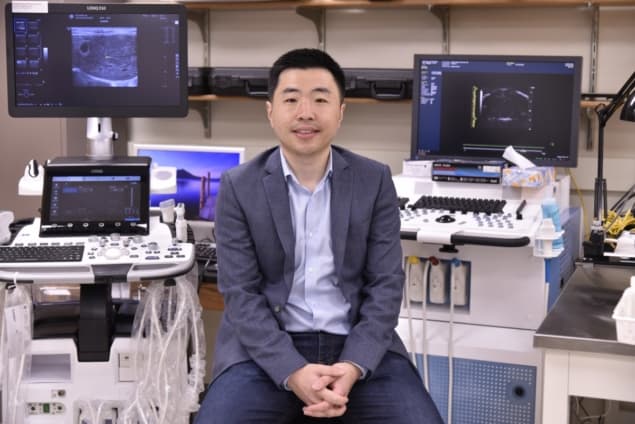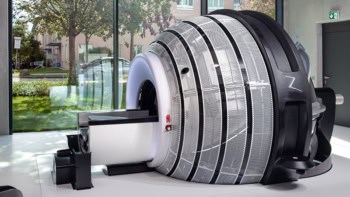
The centres of tumours often experience oxygen deprivation as the blood supply struggles to keep up with demand from uncontrollably proliferating tumour cells. Patients with tumours in this hypoxic state are known to have poorer outcomes, but until now, there’s been no viable non-invasive way to accurately measure tumour hypoxia within tissues.
Computer and biomedical engineers at the Beckman Institute, the University of Illinois at Urbana-Champaign and the Mayo Clinic have leveraged new ultrasound tracking technology to reveal the hypoxic status of tumours. In their Scientific Reports publication, the researchers emphasize their data processing technique’s clinical potential (Sci. Rep. 10.1038/s41598-020-59338-z).
“This study is unique because we can image tissue that is deeper inside humans without losing image resolution,” says Pengfei Song. “Ultimately, we want to be able to use this technique in a clinical setting for cancer detection, diagnosis and therapy evaluation.”
Tracking microbubbles
Ultrasound localization microscopy (ULM) is a relatively new technique, recently demonstrated to safely map tiny blood vessel structures (microvasculature) deep within tissue. ULM works by using contrast-enhanced ultrasound to track the path of microbubbles (which are the same size as a red blood cell) within a tumour’s intricate microvasculature. These images are then processed using an algorithm and carefully filtered to produce a high-resolution microvasculature map, of much higher quality than achieved by traditional ultrasound.
“Although this technique requires us to inject these microbubbles, they do not have toxicity problems as other imaging agents,” says Song, pointing out that microbubbles are already utilized in clinics worldwide.
The researchers wanted to take the use of microbubble tracking further. They applied advanced data processing to calculate vascular tortuosity and blood flow – useful metrics in revealing a tumour’s hypoxic status.
“Red blood cells can flow through straight blood vessels quickly and efficiently,” explains Matthew Lowerison, a postdoctoral research associate in the Song Research Group. “In contrast, the blood vessels in tumours are twisted onto each other. It is chaotic and disorganized, and the delivery of oxygen is inefficient.”
Testing the theory
The researchers examined an in vivo model, engrafting laboratory-grown renal tumours onto the chorioallantoic membrane (which experiences minimal tissue motion) of six chicken embryos. They injected microbubbles into a vein on the membrane surface and recorded ULM images at five cross-sections per tumour. From these images, super-resolution data processing calculated the microvascular structure, vascular perfusion and hypoxic state of the tumours.

Unsurprisingly, the tumours displayed reduced blood flow in the central tumour region compared with the more vascularized tumour periphery. This finding correlated with conventional super-resolution quantification of blood velocity.
ULM measures of microvascular structure and hypoxia also significantly correlated with histological probing for proteins associated with hypoxia on fixed tumour sections.
Hypoxia as a clinical biomarker?
The researchers are quick to point out that although their comparisons are promising for ULM, there isn’t a gold standard method for quantifying tumour hypoxia. To prove that the ULM metrics produced are robust and reproducible, a larger study will be necessary.
Disruption of imaging due to tissue motion is another challenge posed by clinical application of this approach. Such motion is likely to occur in the long acquisition times required to gather sufficient data, especially in large animal and clinical imaging scenarios. Further development of the technique is required to robustly garner hypoxic metrics in these scenarios closer to the true clinical setting.
“We are starting to see good results when we use artificial intelligence and machine learning with these technologies, which can help to make this process faster,” Song says.



